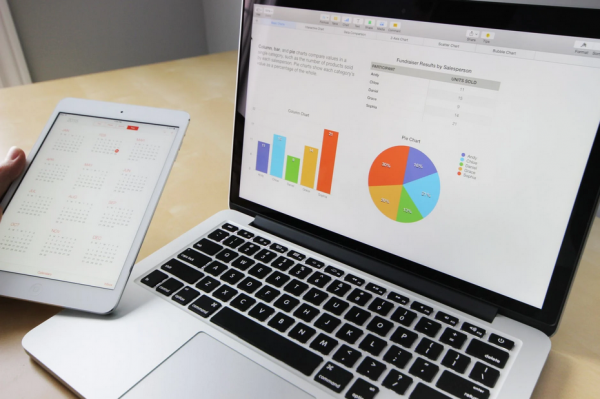A CRM Migration Tutorial
Are you seeking some CRM help or CRM support? Salesforce support? Or Salesforce migration? Are you leaving your current CRM and looking to migrate to Salesforce? How do you do that without losing important data in the process? This is the CRM tutorial for you.
Customer Relationship Management (CRM) are crucial these days in improving your sales and growing your business. Nearly 90% of companies with 10+ employees rely on some type of CRM solution. Why? Because being able to segment your customers, send them targeted content, and follow every contact through your customized sales funnel is a necessity in this day and age. The CRM that you decide to switch to should take into account what you are trying to accomplish and why you want to switch.
Common Reasons to Switch CRMs
- Cost
- Scalability
- Weak Analytics
- Missing Features
- Configuration Issues
- Restricted Automations
- Limited Third-Party Integrations
In looking at potential CRMs, there are a lot of options to choose from. Some simply integrate into your Gmail, while others handle multiple business operations for you; email automations, landing page creations, newsletters, and social media monitoring and posting. Below are a few popular CRM solutions out there.
CRM Solutions
- Salesforce
- Hubspot
- Monday CRM
- Zoho CRM
- Microsoft Dynamics 365
- Copper (Gmail Integration)
- Pipedrive (Gmail Integration)
For our CRM Migration Tutorial, we’ll be walking you through the process for properly launching your Salesforce CRM. But our step-by-step guide is applicable for mostly all CRM solutions mentioned above.

CRM Checklist
Moving data from one CRM system to the next can be a daunting task. Many companies ignore the writing on the wall as long as possible because it is a jarring company-wide change. But it is a decision that should be decided on quickly between your key stakeholders and meticulously implemented by CRM experts or an IT CRM migration team. The faster that your team begins your CRM migration process, the better you’ll be in the long run.
We understand it’s a tricky and delicate process to switch to a new CRM. You’ve accumulated leads and specific data on your customers over the years and you would hate to lose data or start from scratch. It’s a big fear for many executives, and why companies and startups are so reluctant to make the CRM switch. It can also be costly, too.
IT Global Services has a data migration checklist for you:
- Migration Prep
- Data Mapping
- Test Import
- Bulk Migration
- Audit
CRM Migration Preparation
For any large operation, having an appropriate timeline for achieving your migration is at the forefront of the CRM switch. Make sure that you’re allowing your internal team, or a group of skilled data migration professionals, enough time to properly migrate and clean the data. Anticipate a few months of dedicated work to accomplish these goals and make your CRM migration process a success story.

CRM Data Mapping
Before you do anything with your legacy CRM data, create a backup first. It would be a tech disaster to have complications arise with your data migration with no ability to restore your earlier data.
Data mapping is easily the most important step in this process. If you’re going from a legacy CRM solution to a new CRM tool, you’ll need to organize your data properly for the move. Each CRM solution allows you to customize the way you organize your new data, but the data might be categorized differently. Every CRM will have the standard fields (Name, Phone, Email) already in their system. But as a company, you might have company-wide terminology or phrases that you use as replacements for words you find in your new CRM. Make sure you are double-checking!
Moving to a new CRM system should be a liberating experience. You shouldn’t be starting fresh, but it should feel like a fresh start for your business. Eliminate any unnecessary data fields or relationships, merge or delete duplicate records, and refine your sales funnels. Don’t just carry over junk data from your legacy CRM without aligning it with your future business needs. Your company has changed a lot over the years, so take this opportunity to improve your operations.
The end result of your CRM migration should make it easier for you to carry out complex reporting needs and acquire helpful customer insights. You also want to empower your employees with a useful platform for them to make better business decisions.
CRM Test Import
Don’t just skip to a full data migration. Develop a test import of data to migrate into your new CRM system. Even if you are 99% sure that you have done everything correct, always do a few test imports. One of your migration tools might be having a bad day and some error occurs that you couldn’t have anticipated, resulting in a lot of backtracking and frustration on your end. Trust us, it’s easier to look at a small set of data instead of doing a complete migration over again.
Once you feel like you’ve nailed down your data mapping, test your dataset alignments by importing a batch of content to see if it properly populates in Salesforce. This will help you troubleshoot any missing datasets or customized fields that aren’t being populated properly. You want to confirm that what you had set out to do in the prior step will be carried over in your Salesforce CRM. If everything looks good, move onto the full data migration for Salesforce CRM.
Salesforce Data Migration

Once you have run a few test imports successfully and your data looks good, you’ll be ready to initiate the larger Salesforce data migration by using a custom script or data migration tool that automates the work for you. Unless you have a CRM data migration specialist on your team, we highly recommend a consultant company to execute the migration for you. Careless mistakes during this CRM migration process can be costly. You want your customer data and company-specific data imported right the first time.
CRM experts like IT Global Services can minimize the risk and burden of a failed Salesforce migration.
Best Salesforce Email Migration Tools
Many companies and consultants will use a combination of third-party CRM Data Migration Tools below.
- Import Wizard
- Scribe
- SSIS
- Dynamics to CRM Chapter
- Pentaho Data Integration
- SugarCRM
- Talend Open Studio
If you’re looking to hire a CRM Migration Specialist, call or email us. We would love to help you improve your revenue and business operations with a properly executed CRM system.

CRM Audit
Once the Salesforce Data Migration is complete, double-check your work! Are there any data formatting issues? Are addresses combined or split properly? Are date fields correct? Did names get cobbled together somehow? Are responsible parties for individual records carried over? You need to confirm that no data was missed during the migration or integration process, so a CRM Audit is essential.
Salesforce Implementation Help
If you don’t have an internal team to properly execute your CRM migration, you’ll need a reliable Salesforce migration service or Salesforce data migration team. IT Global Services has one of the best Salesforce email migration services for your business. We’re a trusted solution for any of your CRM needs, so give us a call!
